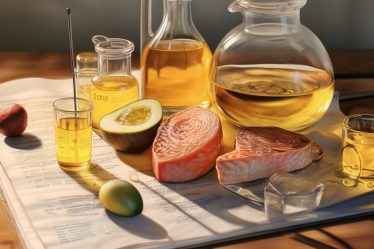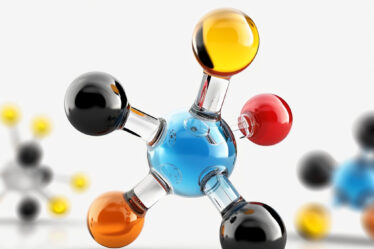
As a chemistry student, you’ve likely encountered the term “molar mass” in your studies. Molar mass is a fundamental concept in chemistry, and mastering it is essential for understanding various topics in your coursework. This comprehensive guide will walk you through the basics of molar mass, its significance, and how to calculate it. By the end of this guide, you’ll have a solid grasp of molar mass and its applications in chemistry.
Looking for a chemistry tutor? Visit meet’n’learn, where our qualified teachers are ready to help you excel.
Understanding Molar Mass in Chemistry
Molar mass is rooted in studying atoms and their properties. Atoms are the basic building blocks of matter, and understanding their structure is key to understanding molar mass.
Molar mass is defined as the mass of a given substance (chemical element or compound) divided by the amount of substance measured in moles. This value is expressed in grams per mole (g/mol).
Molar mass is essential in chemistry and other fields such as physics and biology. It is crucial in various calculations, including stoichiometry, molecular weight determination, and chemical reactions. This guide will provide the necessary information to master molar mass and excel in chemistry studies.
Atomic Mass Unit (AMU) and the Periodic Table – Essential Tools for Calculating Molar Mass
Before delving into molar mass, it’s essential to familiarize yourself with the atomic mass unit (AMU) and the periodic table. The atomic mass unit is a unit of mass used to express atomic and molecular weights. One AMU is defined as one-twelfth the mass of a carbon-12 atom, which is approximately equal to 1.660539 x 10^-27 kg.
The periodic table systematically arranges chemical elements based on their atomic number, electron configurations, and recurring chemical properties. Each element on the periodic table is represented by its symbol, atomic number, and atomic mass. The atomic mass of an element, expressed in AMUs, is approximately equal to the sum of the protons and neutrons in its nucleus.
Understanding the periodic table is crucial for mastering molar mass. By knowing the atomic masses of individual elements, you can determine the molar mass of compounds by adding the atomic masses of their constituent elements.
Are you struggling with mass fraction? Our blog post “Mastering Mass Fraction: A Comprehensive Guide to Chemistry Concepts, Definitions, and Examples” is a great online resource.
Connection Between Molar Mass, Mole, and Avogadro’s Number
Molar mass, mole, and Avogadro’s number are three interrelated concepts in chemistry. A mole is a unit of measurement used to express the amount of a substance. It is defined as the amount of a substance that contains as many particles (atoms, molecules, ions, etc.) as 12 grams of carbon-12. This number, known as Avogadro’s number, is approximately 6.022 x 10^23 particles per mole.
The relationship between molar mass, mole, and Avogadro’s number is essential for various calculations in chemistry. Molar mass is the mass of one mole of a substance, while Avogadro’s number represents the number of particles in one mole of a substance.
By knowing the molar mass and Avogadro’s number, you can calculate the mass of a given substance, measured in moles, and vice versa.
Practical Lessons in Calculating Molar Mass
To calculate the molar mass of a compound, you need to know the atomic masses of the constituent elements and their proportions in the mix. The atomic masses can be found on the periodic table, while the chemical formula of the compound determines the proportions. Here’s how to calculate the molar mass step-by-step.
Step-by-step Molar Mass Calculation
One of the most essential skills in chemistry is the ability to calculate molar mass. Here’s a step-by-step guide to help you master it:
The formula calculating molar mass is:
Molar Mass = Σ (Atomic Mass of Element × Number of Atoms of Element)
- 1. Identify the chemical formula of the substance. The chemical formula lists all the elements in the substance and the number of atoms of each element.
- 2. Use the periodic table to find the atomic weight of each element in the formula. The atomic weight is typically listed under the element symbol.
- 3. Multiply the atomic weight of each element by the number of atoms of that element in the substance. This will give you the total mass of each element in the substance.
- 4. Add up the total masses of all the elements to get the molar mass of the substance.
Practical Examples of Molar Mass Calculation
Water (H2O): The atomic weight of hydrogen (H) is approximately 1.01 AMU, and there are two hydrogen atoms in water. So, the total mass of hydrogen is 2 * 1.01 AMU = 2.02 AMU. The atomic weight of oxygen (O) is about 16.00 AMU, and one oxygen atom is in water. Therefore, the molar mass of water is 2.02 AMU (from hydrogen) + 16.00 AMU (from oxygen) = 18.02 AMU.
Carbon dioxide (CO2): The chemical formula of carbon dioxide is CO2, which means it consists of one carbon atom and two oxygen atoms. The atomic mass of carbon is 12.01 AMU, while the atomic mass of oxygen is 16.00 AMU. Therefore, the molar mass of CO2 is (1 x 12.01) + (2 x 16.00) = 44.01 g/mol.
Sodium chloride (NaCl): Sodium chloride consists of one sodium atom and one chlorine atom. The atomic mass of sodium is 22.99 AMU, and the atomic mass of chlorine is 35.45 AMU. Thus, the molar mass of NaCl is (1 x 22.99) + (1 x 35.45) = 58.44 g/mol.
Sodium hydroxide (NaOH): Sodium hydroxide contains one sodium atom, one oxygen atom, and one hydrogen atom. The atomic mass of hydrogen is 1.01 AMU. Therefore, the molar mass of NaOH is (1 x 22.99) + (1 x 16.00) + (1 x 1.01) = 40.00 g/mol.
Struggling with viscosity? Our blog post on “Viscosity: An In-Depth Chemistry Learning Guide Prepared by Tutors” is a helpful resource.
Grams per mole (g/mol) and its Significance
The unit of molar mass, grams per mole (g/mol), is crucial for understanding the relationship between mass and the amount of substance in chemistry. Grams per mole is a conversion factor that allows you to convert between mass and moles, which are two fundamental units of measurement in chemistry.
The significance of grams per mole lies in its ability to simplify calculations involving mass, moles, and the number of particles in a substance. By knowing the molar mass of a substance, you can easily calculate the number of moles in a given mass of the substance and vice versa. This is particularly useful in stoichiometry, where you often must determine the quantities of reactants and products in chemical reactions.
How to Convert Moles to Grams
The formula for moles to grams conversion is:
Mass (g) = Number of moles x Molar mass (g/mol)
- Determine the molar mass of the substance (as described in the step-by-step guide above).
- If converting from moles to grams, multiply the moles by the molar mass.
- If converting from grams to moles, divide the number of grams by the molar mass.
For instance, to find the mass in grams of 2 moles of water, we would multiply the number of moles (2) by the molar mass of H2O (approximately 18.02 g/mol). So, 2 moles of H2O is roughly 36.04 grams.
Differentiating Atomic Weight, Molecular Weight, and Molar Mass
Although often used interchangeably, atomic weight, molecular weight, and molar mass are distinct concepts in chemistry. Atomic weight refers to the weighted average mass of the atoms of an element, taking into account the abundance of its isotopes. It is expressed in atomic mass units (AMUs). On the other hand, molecular weight refers to the sum of the atomic weights of all the atoms in a molecule. It is also expressed in grams per mole (g/mol), like molar mass.
Molar mass, as previously defined, is the mass of one mole of a substance. Although molar mass and molecular weight have the same unit (g/mol), molar mass is a more general term that can be applied to both elements and compounds, while molecular weight is used explicitly for molecules.
Molarity and its Connection to Molar Mass
Molarity is a measure of the concentration of a solute in a solution, expressed in moles of solute per liter of solution (mol/L). Molarity is an essential concept in chemistry, especially in studying solutions and their properties.
The connection between molarity and molar mass lies in calculating the mass of a solute in a solution. To calculate the mass of a solute required to prepare a solution of a given molarity, you need to know the molar mass of the solute.
The formula for this calculation is:
Mass of solute (g) = Molarity (mol/L) x Volume of solution (L) x Molar mass (g/mol)
By knowing the molar mass, molarity, and volume of a solution, you can calculate the mass of the solute required to prepare the solution and vice versa.
Need help with the covalent bond? Check out our blog post on “Covalent Bond: Definition, Formation, and Types with Examples”.
Tips and Tricks for Mastering Molar Mass Calculations
Mastering molar mass calculations requires practice and a good understanding of the concepts discussed in this guide. Here are some tips and tricks to help you excel in molar mass calculations:
- Familiarize yourself with the periodic table and the atomic masses of common elements.
- Understand the relationship between molar mass, mole, and Avogadro’s number and how they are used in calculations.
- Practice calculating the molar mass of various compounds using their chemical formulas and atomic masses.
- Learn to differentiate between atomic weight, molecular weight, and molar mass and when to use each term.
- Apply molar mass in stoichiometry and molarity calculations to strengthen your understanding of its significance in chemistry.
Molar Mass Tutoring: Enhancing Understanding through Personalized Lessons
Tutoring is crucial in enhancing students’ understanding of complex concepts like molar mass. Personalized lessons help address individual learning styles and paces, ensuring each student gains a solid grasp of the subject matter.
Tutoring Techniques for Molar Mass
Effective tutoring techniques for molar mass include practical exercises, real-world examples, and interactive digital tools. Tutors often employ step-by-step guides for molar mass calculation and emphasize the concept’s applications in chemistry to make learning more engaging and relevant.
Online and Offline Molar Mass Lessons
Both online and offline tutoring can be effective for learning molar mass. Online lessons offer flexibility and convenience, while face-to-face tutoring provides a more personalized interaction. Regardless of the platform, the key is a clear explanation, regular practice, and consistent feedback.
How to find a chemistry tutor or chemistry lessons?
If you need a chemistry tutor, search for “chemistry tutor Glasgow” or “chemistry teacher Sheffield” on tutoring platforms, such as meet’n’learn for individualized help.
If group study suits you better, search “chemistry classes London” or “chemistry lessons Manchester” online to find local schools offering chemistry classes.
Conclusion: Molar Mass Mastery
In conclusion, understanding molar mass is a fundamental aspect of chemistry education for high school students or beyond. This comprehensive guide covered crucial concepts like the mole, Avogadro’s number, atomic mass unit, atomic weight, and molar mass calculations. We’ve also delved into practical lessons and the significance of tutoring in mastering molar mass. Whether you’re a student seeking to excel in chemistry or a tutor aiming to deliver practical molar mass lessons, this guide is valuable.
Looking for a chemistry tutor? Visit meet’n’learn, where our qualified teachers are ready to help you excel.
FAQs: Understanding Molar Mass
What is the molar mass of a substance?
The molar mass of a substance is the mass of one mole of that substance. It’s usually expressed in grams per mole (g/mol).
Why is molar mass important in chemistry?
Molar mass is critical in chemistry as it allows us to convert between the mass of a substance and the amount of a substance in moles, making it possible to calculate reactions.
What’s the difference between molecular mass and molar mass?
Molecular mass is the sum of the masses of all the atoms in a molecule, while molar mass is the mass of one mole of a substance.
How can I calculate the molar mass of a compound?
To calculate the molar mass of a compound, determine the number of each type of atom in the compound, then add up the molar mass of all these atoms.
Can a tutor help me understand molar mass better?
Absolutely! A tutor can offer personalized lessons and strategies to help you grasp complex concepts like molar mass more effectively.


